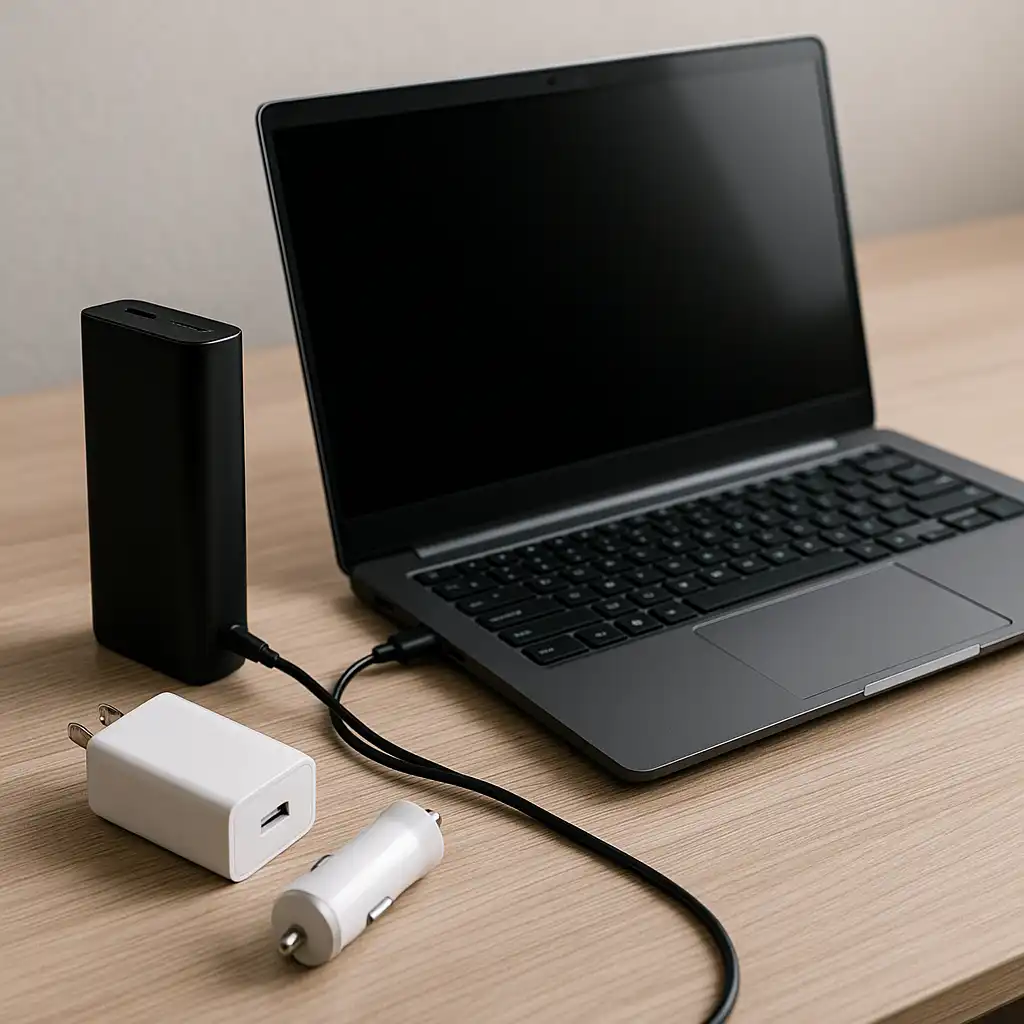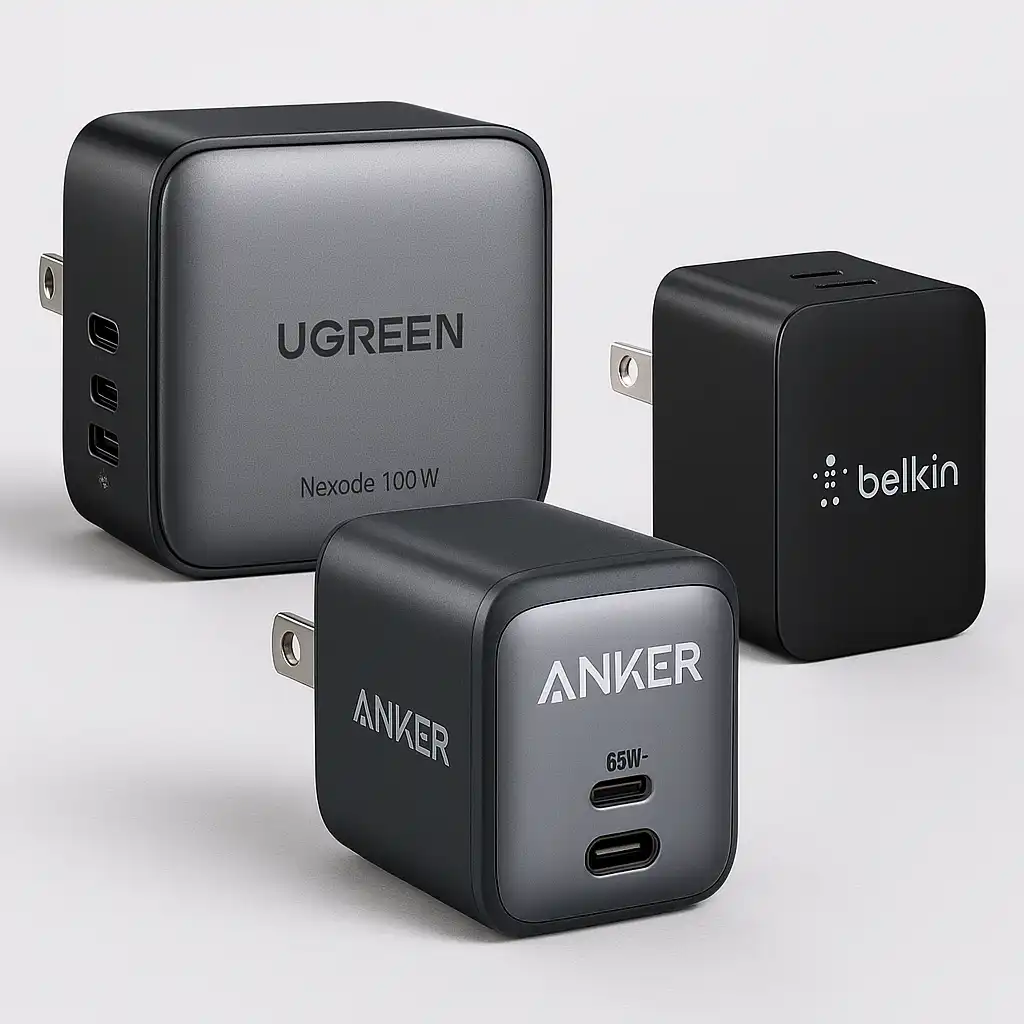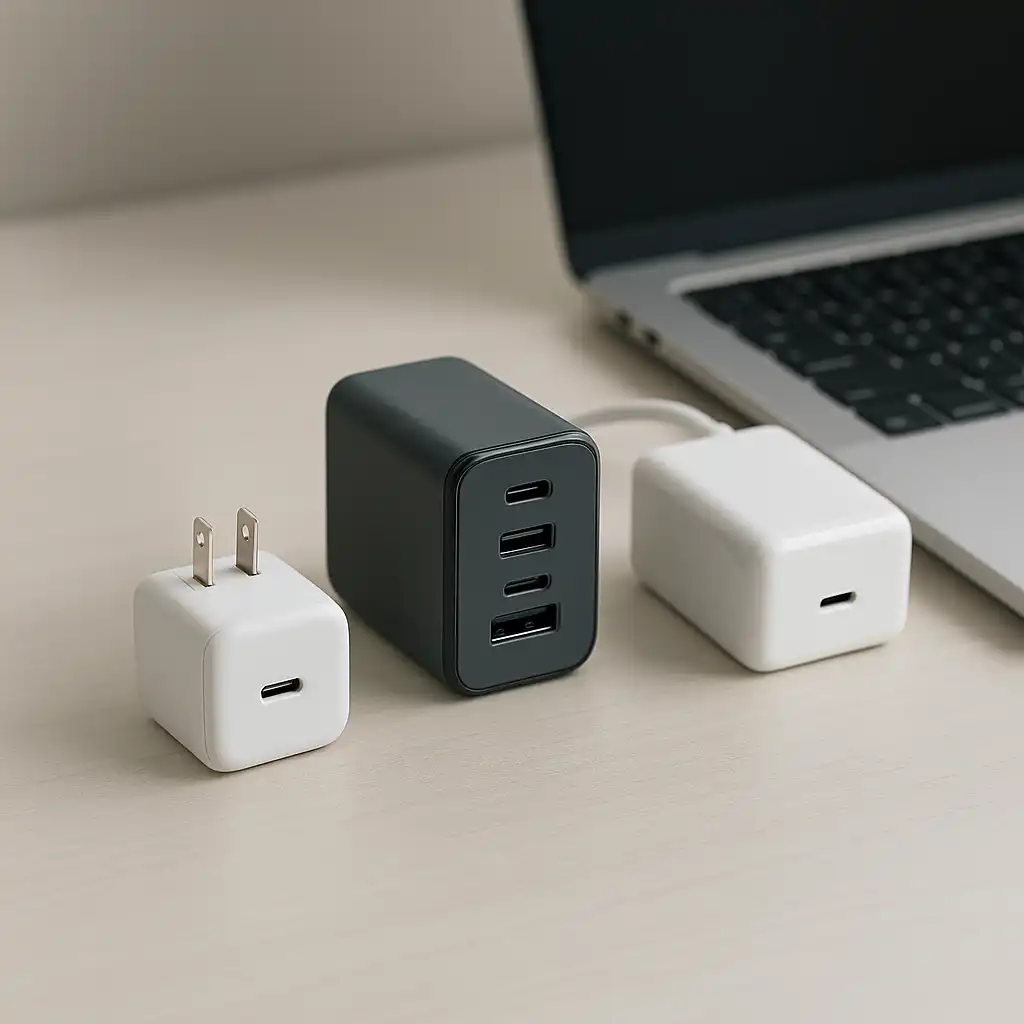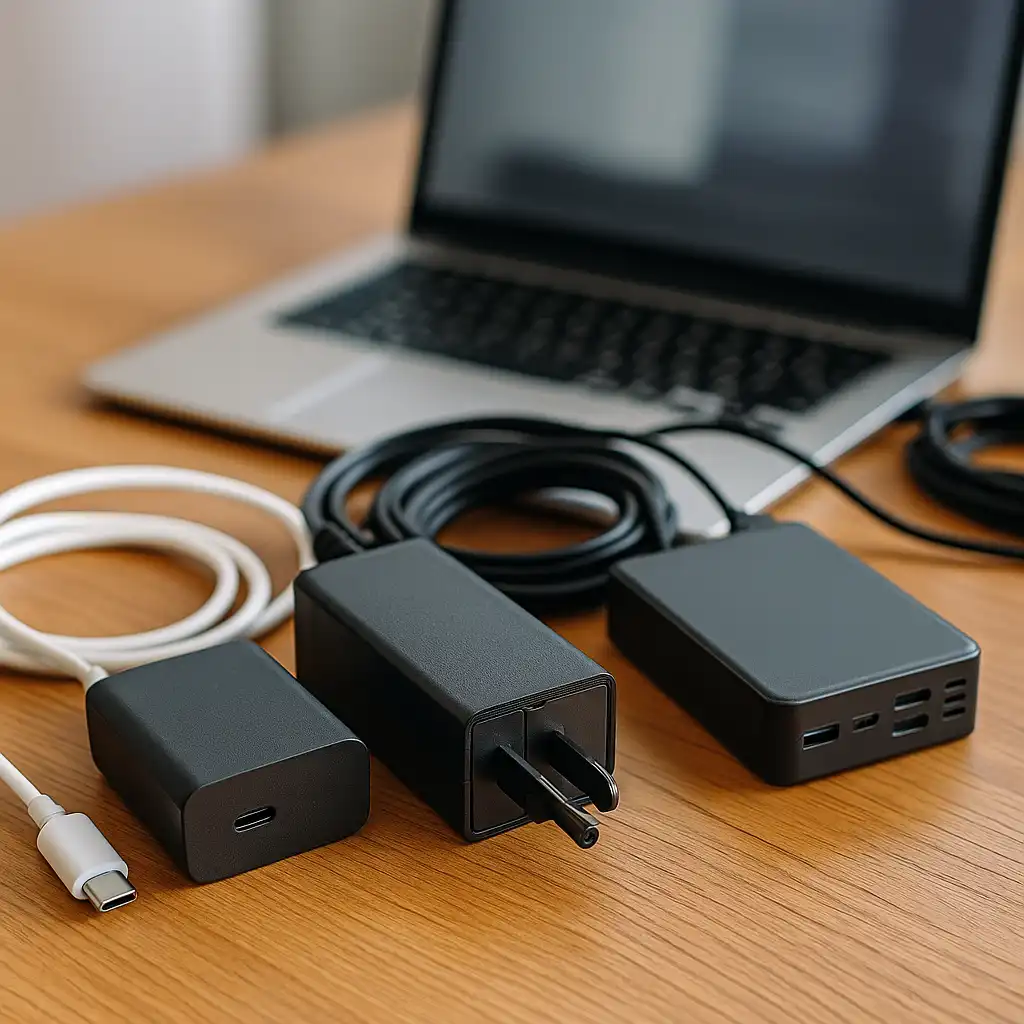How to Charge a Laptop Without a Charger — Safe Alternatives That Work
Disclosure: This post contains affiliate links. LaptopVoyager.com participates in the Amazon Associates Program and may earn commissions on qualifying purchases, at no extra cost to you.
Last Updated: December 2025
Losing your laptop charger or leaving it behind can be stressful, but you still have several safe ways to power your device. While these alternatives aren’t meant to replace your original charger long-term, they can easily get you through travel days, emergencies, or unexpected situations without putting your battery at risk.
👉 If you want a quick refresher on wattage, USB-C compatibility, and how laptop charging works, take a look at our full breakdown of laptop charging basics before trying any alternative method.
🔍 Use a USB-C Power Delivery Charger (If Your Laptop Supports It)
Many modern laptops—including MacBooks, newer Dell and HP models, Lenovo ThinkPads, and Chromebooks—support USB-C Power Delivery (PD). If your laptop has a USB-C port with a charging icon, this is the easiest and safest alternative.
Look for the charging symbol near the USB-C port
Use a PD charger with enough wattage for your model
Pair it with a reliable USB-C PD cable
If your laptop supports USB-C charging, this method often works just as well as the original charger.
🔍 Charge With a Portable Laptop Power Bank
Laptop-grade power banks are excellent backup options when traveling or working away from home.
Choose a power bank rated for 45W–100W output
Use USB-C PD models specifically designed for laptops
Higher-watt options can charge 15–16 inch machines
This is one of the easiest ways to stay powered without a wall charger.
🔍 Use a Universal Laptop Charger (Barrel-Type Models)
If your laptop doesn’t support USB-C charging, a universal barrel-tip charger may still work.
Pick a reputable brand with multiple adapter tips
Match the voltage and polarity to your laptop
Avoid low-quality or unregulated chargers
These can be great temporary solutions for older laptops.
🔍 Charge Through a USB-C Dock With Power Delivery
A USB-C dock with PD passthrough can charge your laptop as long as:
The dock supports PD input
You connect a high-watt PD charger to the dock
Your laptop supports USB-C charging
It’s a convenient option in offices, hotels, or coworking setups.
🔍 Use a USB-C PD Car Charger
For road trips or travel days, a USB-C PD car charger can keep your laptop powered.
Use one rated for at least 45W
Plug into the car’s 12V outlet
Avoid charging for long periods with the engine off
It’s a reliable option when you’re working on the go.
🔍 Borrow a Compatible Charger
Borrowing a charger is often the fastest and simplest fix.
MacBooks can share USB-C chargers
Most modern Windows laptops accept 65W or 100W USB-C chargers
Underpowered chargers may work slowly but still help in an emergency
Just make sure the wattage is appropriate for your device.
🔍 Avoid Unsafe or Improvised Charging Methods
Some online “charging hacks” can seriously damage your laptop.
Avoid:
Phone chargers without PD
DIY cables or exposed wires
Jump starter clamps
Chargers with mismatched voltage
Stick to safe, well-regulated charging methods.
📌 Key Takeaways
- USB-C PD chargers are the safest alternative for supported laptops
- Laptop power banks provide reliable backup charging
- Universal chargers work well for older barrel-connector laptops
- USB-C docks with PD passthrough can power compatible systems
- Avoid improvised or unregulated charging methods
🟢 FAQs
Q: Can all laptops charge through USB-C?
No. Only models with USB-C PD charging support this feature.
Q: Can I charge a laptop with a phone charger?
Not unless it’s a USB-C PD charger with enough wattage.
Q: Are laptop power banks safe?
Yes—if they support USB-C PD and meet your laptop’s wattage needs.
Q: Will alternative chargers damage my laptop?
Safe, regulated PD or universal chargers won’t. DIY or mismatched chargers might.
Q: What if none of these options work?
Your laptop may require the original charger or have a faulty charging port.
✅ Conclusion
You can safely charge a laptop without its original charger using USB-C PD chargers, laptop power banks, universal adapters, or PD-enabled docks. These methods help you stay productive until you get a replacement adapter. Just stick to safe, regulated charging options and avoid improvised shortcuts.







